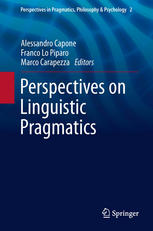

Most ebook files are in PDF format, so you can easily read them using various software such as Foxit Reader or directly on the Google Chrome browser.
Some ebook files are released by publishers in other formats such as .awz, .mobi, .epub, .fb2, etc. You may need to install specific software to read these formats on mobile/PC, such as Calibre.
Please read the tutorial at this link: https://ebookbell.com/faq
We offer FREE conversion to the popular formats you request; however, this may take some time. Therefore, right after payment, please email us, and we will try to provide the service as quickly as possible.
For some exceptional file formats or broken links (if any), please refrain from opening any disputes. Instead, email us first, and we will try to assist within a maximum of 6 hours.
EbookBell Team

4.3
68 reviewsThis volume provides insight into linguistic pragmatics from the perspective of linguists who have been influenced by philosophy. Theory of Mind and perspectives on point of view are presented along with other topics including: semantics vs. semiotics, clinical pragmatics, explicatures, cancellability of explicatures, interactive language use, reference, common ground, presupposition, definiteness, logophoricity and point of view in connection with pragmatic inference, pragmemes and language games, pragmatics and artificial languages, the mechanism of the form/content correlation from a pragmatic point of view, amongst other issues relating to language use. Relevance Theory is introduced as an important framework, allowing readers to familiarize themselves with technical details and linguistic terminology.
This book follows on from the first volume: both contain the work of world renowned experts who discuss theories relevant to pragmatics. Here, the relationship between semantics and pragmatics is explored: conversational explicatures are a way to bridge the gap in semantics between underdetermined logical forms and full propositional content.
These volumes are written in an accessible way and work well both as a stimulus to further research and as a guide to less experienced researchers and students who would like to know more about this vast, complex, and difficult field of inquiry.